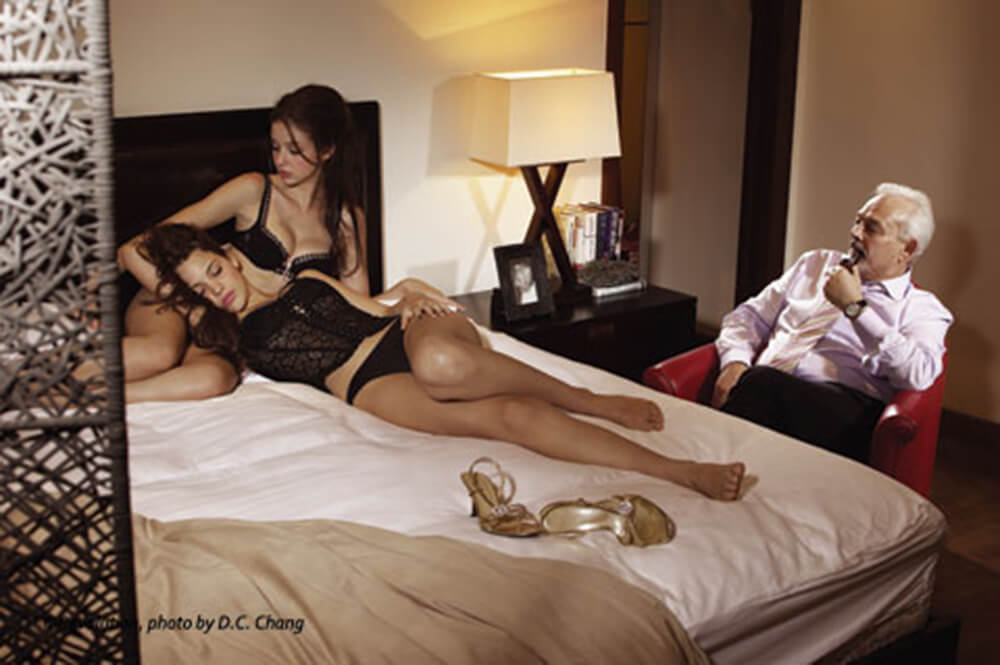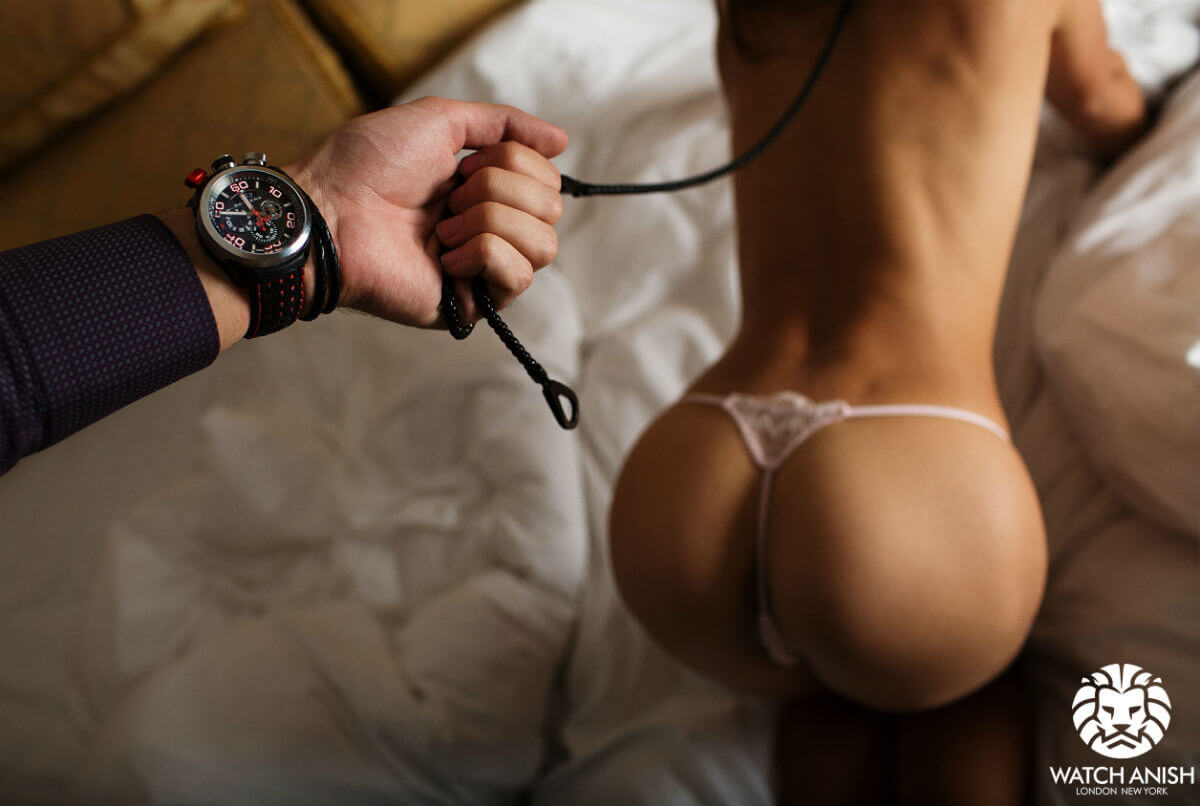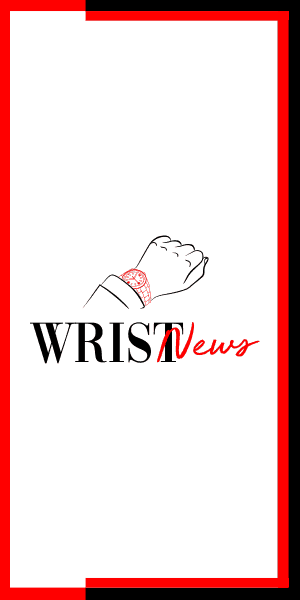Credits: Article and images by @ Quill & Pad. See the original article here - https://quillandpad.com/2024/03/30/sex-sells-watches-but-what-for-whom-and-to-whom/
—————————————————————————————————–
Media and sex
In the world of mainstream watch media, Revolution magazine occupies an exalted status with its glossy and professionally produced photo spreads being one of its core attractions.
Many of those features, including a great many of the cover stories, feature female models in various states of dress and undress who also happen to be wearing watches.
By and large, I personally find the Revolution images to be on the artistic side of the decorum line, although the “Cake” article image above is perhaps an exception. But on at least one legendary occasion things went hilariously amok with a series of boudoir photos featuring leading independent watchmakers.
I know that at least one of these guys is still in trouble with his wife years later about his participation in that shoot, so I won’t share any of “his” photos here. But here’s one of Philippe Dufour, apparently passing a bit of time between sessions at his watchmaker’s bench.
I have to confess that I’d be deeply offended every time I look at this photo if only I could stop laughing so hard. (See Why Philippe Dufour Matters. And It’s Not A Secret.)
The age of self-promotion
The further we range from the brands themselves, the blurrier the link between the use of sexual images and direct promotion of brand equities becomes.
Starting in the heyday of the big watch forums, and continuing to the Instagram-intensive present time, there are folks out there who just seem to love portraying watches with women (rather than the other way around).
This genre, which seems mostly about attracting attention to the post originator, takes multiple forms: wristshots (read Wristshots: The Story So Far), composite photos like the one that launched this article, and even semi-nude selfies by enterprising female bloggers.
There’s even a highly talented (and quite pretty) independent practitioner of finissage with a Facebook page called Vidayhado who has taken to posting relatively demure beauty shots of herself at the bench and on the beach to the delight of her Facebook followers, myself included (remember, I’m no prude).
Crossing the line
So if the slope is so slippery and the lines so indistinct, how do we know unsavory watch-related sexuality when we see it?
Exhibit one: the “Watches of Grey” post seen recently on the Watch Anish site that caused no small uproar in the online watch world, including a heated rebuke from a well-known French-language blogger (who apparently felt the need to publish many of the offending images to prove his point).
What’s wrong with the image above? Take a quick look at who’s clothed, who’s not, who’s wearing the watch, who’s at each end of the leash, and who is sufficiently out of focus to be treated as a convenient object, and you should get an idea.
It might (or might not) have been so bad if article author “Ed” had read 50 Shades of Grey and this was his attempt at an honest interpretation, but in the article itself he freely stated that he had not: “Now I haven’t read the book or seen the movie . . . ” A later postscript to the article, “#Chilloutgreg,” was widely understood to be a direct rebuke to the above-mentioned criticisms.
Where were the brands featured in the article through all of this? Mostly claiming plausible deniability by stating that they did not pay specifically to be featured in this particular post and hence couldn’t be blamed.
The sixty-four (thousand) dollar question
“Half the money I spend on advertising is wasted; the trouble is I don’t know which half” – attributed to merchant John Wanamaker.
Does sex actually sell watches?
Here’s my sense: to the extent that brands like Breitling use sexual imagery that appeals to a certain group of youthful buyers, they may be succeeding in attracting some new customers. But this tactic is likely ill-suited to the brand identity objectives of the haute horlogerie brands we cover here at Quill & Pad.
For all of the other members of the horological ecosystem who are publishing sexual images, I think it much more likely that the economic and notoriety value, if any, is flowing to the magazines, bloggers, and individual posters, not to the watchmakers and watch brand owners.
A modest call to action
So what to do? I’m disinclined to give morality lectures, but a few thoughts:
If you like, look: Hey, why not? Female (and male) forms have been displayed in art and commerce for a very long time now, and if it floats your boat I’m not going to try to discourage your discreet viewing.
If it works or doesn’t, say so: I for one would be very eager to hear from our readers about their views on this topic and whether you have ever been influenced – pro or con – on the decision to buy a watch based on sexual imagery.
If it demeans, call it out: Be vocal in helping to set the ethical guardrails for visual discourse in our little watch-loving community. If you don’t, who will?
Brands, stop hiding behind that (figurative) fig leaf: If you stop paying, directly or in aggregate buys, for inclusion in online images that denigrate the participants, there won’t be nearly so many of those images.
At the end of the day, the line between edgy lifestyle marketing and insulting imagery can indeed be razor-thin: if as a result of reading these words you feel a bit more equipped to reach your own conclusions on the topic, I’ve achieved my goal!
* This article was first published on August 27, 2015 at Sex Sells – But What, For Whom, And To Whom? You might find the comments under the original article interesting.
You might also enjoy:
Wake Up And Smell The Coffee: “Effective” Marketing Doesn’t Have To Mean “Expensive” Marketing
Is Independent Creative Horology Dead?
Credits: Article and images by @ Quill & Pad. See the original article here - https://quillandpad.com/2024/03/30/sex-sells-watches-but-what-for-whom-and-to-whom/














